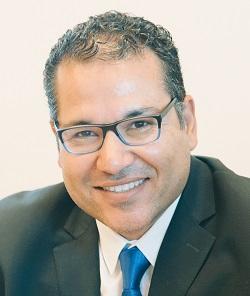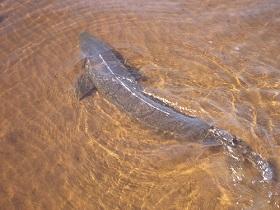Digital wellbeing should be a public health priority for the Arab region
21 October 2025
Published online 29 December 2013

The desire to thwart death and stay young forever has sent humans throughout history scrambling after implausible answers, from the elixir of life and philosophers' stones in the Dark Ages to dubious anti-ageing creams and health supplements in modern times. But seekers' hopes are not all false and perhaps science has some answers.
Recent findings suggest the lifespans of some lab animals can indeed be extended by various means, such as restricting caloric intake in some rodents1 or using drugs to mimic the same effect on the body2,3,.
In addition, a recent study comparing standardised demographic patterns across 46 species, published in Nature this month, reveals that some animals buck the trend of mortality with increasing age4.
The species, such as the hermit crab, the red abalone, and the hydra to name a few, can live for centuries, challenging the notion that evolution inevitably leads to senescence, says Owen Jones, a biologist at the University of Southern Denmark in Odense, who led the study. Senescence, according to study co-author and mathematical ecologist at Woods Hole Oceanographic Institution, Hal Caswell, is an increase in the likelihood of mortality with age, "a decline in the ability to deal with hazards of death, regardless of their source."
Translating the animal-sourced data to humans, however, is hindered by a lack of understanding of the ageing process or an overarching theory explaining it.
When Leonard Hayflick, a professor of anatomy at the University of California, San Francisco, chaired a series of meetings in an attempt to define common terms in the field, he wrote that "the dozen or more experts who attended could not agree on the definition of almost all of them, including 'ageing.' The committee was disbanded and the communications dilemma remains5."
We need to understand how and why we age before delving into the potential of anti-ageing interventions. In its most general definition, ageing is "a progressive, generalised impairment of function, resulting in an increasing vulnerability to environmental challenge and a growing risk of disease and death6."
There are several biological theories on why we age and they can generally be classified under two main categories: programmed ageing or cumulative damage.
Animals that do not die of old age present an enormous research opportunity.
The various theories of programmed ageing claim that ageing is a genetically programmed phenomenon; it is imprinted in the genetic manifesto that predetermines the lifespan of an organism.
For instance, and under this umbrella of theories, pleiotropic genes are implicated in many age-associated diseases including cancer, cystic fibrosis and sickle cell anemia. The immunological theory of ageing contends that programmed decline in the immune function, like loss of efficacy of antibodies and/or disturbed cytokine levels and control, among other things, increases vulnerability to infectious disease.
Conversely, the cumulative damage theories consider ageing as a functional decline due to cumulative random damage of the building blocks of life, including cellular membranes, DNA and proteins. It also links the phenomenon to metabolic rates. Generally, an organism with a faster metabolic rate possesses a faster rate of living and a shorter lifespan, with few exceptions, including birds and humans.
According to Denham Harman, the eminent biogerontologist, reactive oxygen species (ROS) – which are harmful byproducts formed during metabolism – may damage critical cell components and impair self-repair mechanisms within the cells. The damage results in coding errors that produce further cellular injuries, leading eventually to organ failure and ageing. Therefore, the faster the metabolic activity in an organism, the greater the ROS load, leading to premature mortality7.
Several other theories build on this notion. The somatic theory suggests that DNA damage – mostly resulting from ROS – in mitochondria of non-dividing cells can cause cellular damage and produce further ROS, propagating a cycle of damage. Another theory suggests that the accumulation of protein and lipid cross-linking can cause tissue stiffness and lead to ageing. Caloric restriction to maintain low levels of blood glucose slows the effect of protein glycation and is reported to extend the lifespan of lab mice8.

© Robert Elliott / USFWS
This much is clear: ageing is a multifactorial process affected by highly complex interactions amongst multiple biological and behavioral elements. It is almost impossible to disentangle some factors.
For instance, according to the second law of thermodynamics, inanimate objects undergoing time-sensitive changes are destined to eventually reach a state of complete chaos. This can be further explained through the concept of entropy, or as the British astronomer, Arthur Stanley Eddington, calls it, "time's arrow." A thermodynamic measure of microscopic disorder in an isolated system, entropy implies that time is asymmetrical with respect to the amount of order in an isolated system.
Although the value of entropy does not quantitatively reflect time, it can be used to distinguish future from past – just like the age of a living organism. According to this concept, biological ageing is but a directional increase in internal disorder with time5.
In theories building on this deterministic view, ageing is inevitable and programmed, and anti-ageing measures are not possible9.
However, this fails to decisively explain the existence of species exhibiting negligible senescence, including lake sturgeon, that lives for more than 152 years, Rougheye rockfish, with a lifespan of 205 years, lobsters and the naked mole rat which lives up to 28 years, cancer free, and Aldabra giant tortoise, which can endure for up to 255 years.
These animals grow slowly and take a long time to reach sexual maturity so their long lives fit traditional theories of how ageing works. But it seems that their extraordinarily long lifespans result from extremely efficient repair mechanisms — which, in theory at least, can perhaps be reproduced.
As the study led by Jones suggests, the diversity of ageing across species "challenges theoreticians to develop broader perspectives on the evolution of ageing and empiricists to study the demography of more species."
Animals that do not die of old age present an enormous research opportunity; through them scientists can identify genes and associated processes and mechanisms that would provide the first real clue to the biogerontologic rather than geriatric delay of ageing.
Biology does not violate the laws of physics. So the reversal of Eddington's time's arrow requires the harnessing of energy from the ecosystem to combat the natural inclination towards chaos; i.e. diseases and ageing.
It can be suggested that the ageing-associated state of increasing disorder results from a gradual and feedback-accelerated decline in the efficacy of energy cultivation, transformation, and coupling of production with demand by an ageing organism. This concept provides potential for a common ground in which most of the theories of ageing find roots.
During the past few decades, the average life expectancy of humans has almost doubled, which leaves no doubt that we will be able to make further substantial gains in the average lifespan of an individual. Increased life expectancy, to a significant extent, has come through breakthroughs in the laboratory and resulting impacts on the way we live our lives.
Whether these changes slowed the ageing process is a question open for debate, pending a champion centenarian breaking the current record of 122 years lived by Jeanne Calment of France.
Survival is a common goal around which all life revolves; but seeking eternity seems to be a purely human characteristic. Pursuit of immortality will continue to drive our search for the illusive fountain of youth. Until we find it, comfort can be found in Tagore's words:
I think of other ages that floated upon the stream of life and love and death and are forgotten, and I feel the freedom of passing away.
—Rabindranath Tagore, 'Stray Birds'
Sameh Ali is a professor and founding director of the center for aging and associated diseases in Zewail City of Science and Technology in Egypt. He is also is an associate professor in the School of Medicine at the University of California San Diego. His work is focused on mitochondria function and the dynamics of oxygen in various health and disease conditions.
doi:10.1038/nmiddleeast.2013.256
Stay connected: